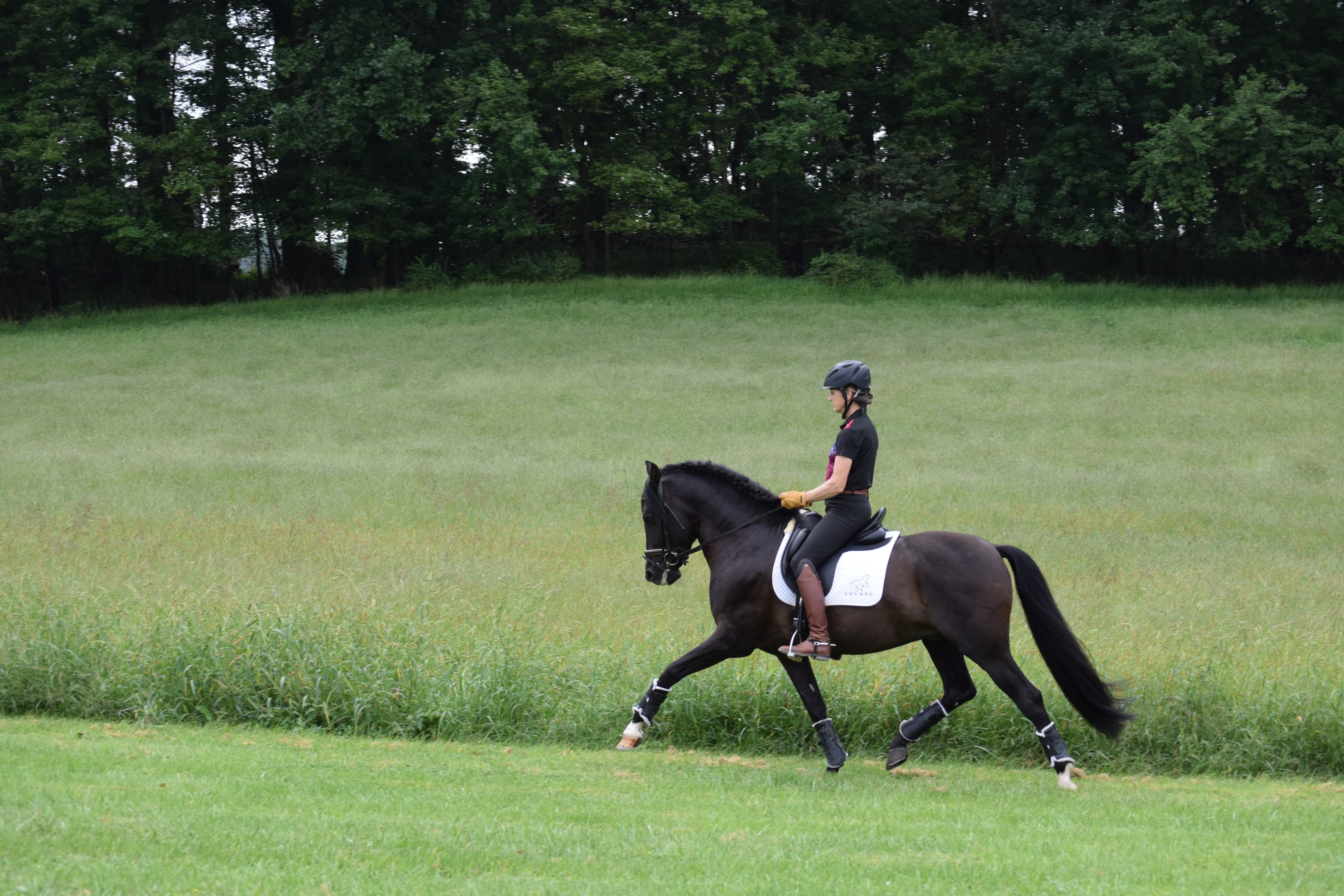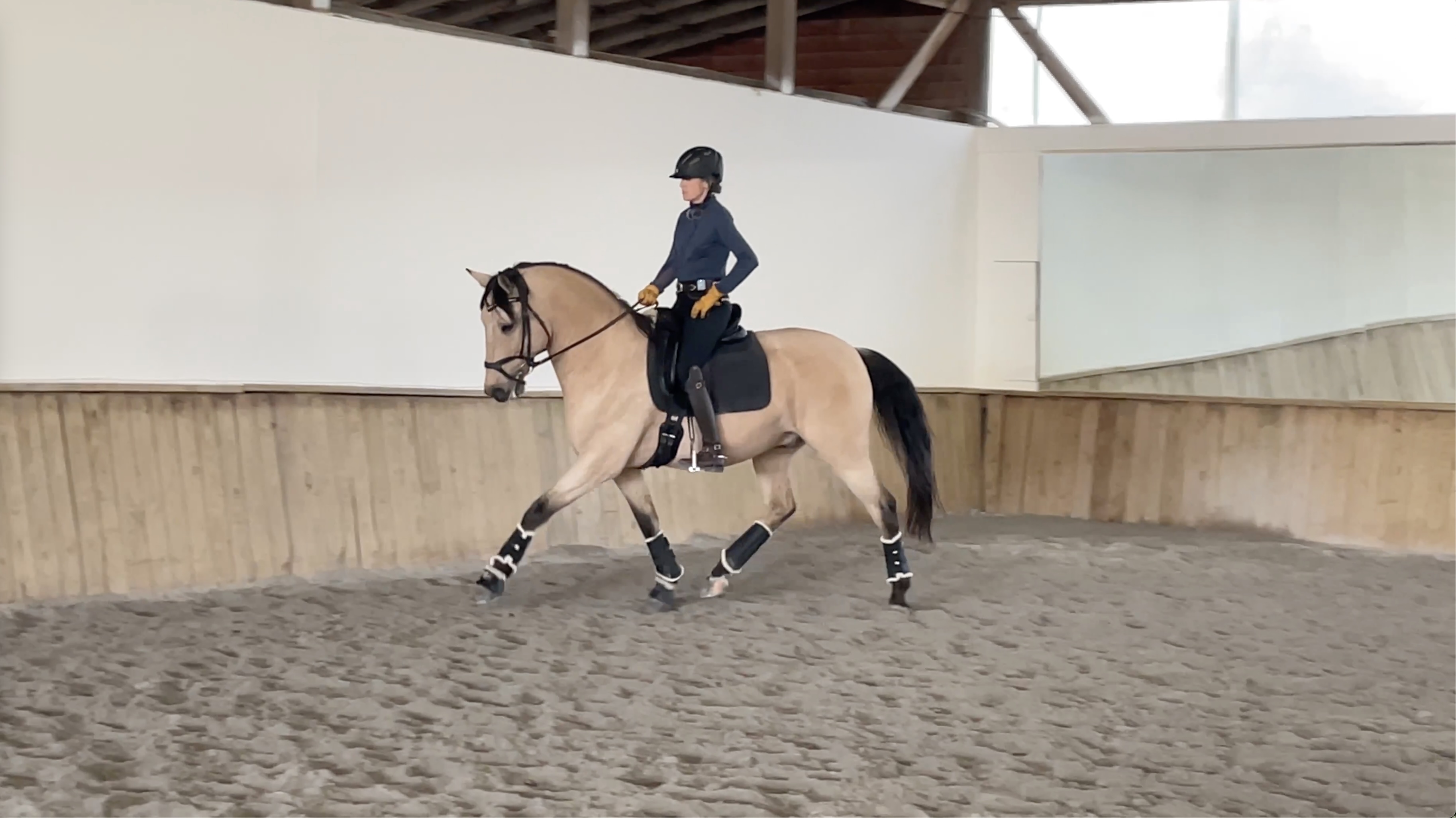- Sep 17, 2025
Let Your Legs "Breathe"
- Felicitas von Neumann-Cosel
- 0 comments
Many riders feel they need to work too hard with their legs, but this often leads to a tight leg that restricts hip movement, which in turn shuts down the horse's natural motion. The horse's ribcage can tense up against this constant pressure, making it difficult to achieve relaxed, forward movement.
Instead of thinking about getting the horse "in front of the leg," try a different approach. The proper leg aid is less about a hard kick and more about a soft, pulsing impulse from a long, relaxed leg. Think of your leg as "breathing" alongside the horse's barrel, with a slight up-and-down movement of the calf. This allows for a much more subtle and effective communication.

A New Way to Ask for the Trot
Working on transitions from walk to trot is an excellent way to re-teach both you and your horse this lighter aid. Here's a simple exercise you can try:
While walking, with your legs moving with the horse's alternating rhythm, gently lift your thighs away from the saddle from your hips. Keep your knees pointed forward. This acts like a clutch, preparing your horse for the next gear.
Now, apply a quick, soft bilateral aid with both legs together, and then immediately relax them. Your horse may not respond at first, as they are likely used to stronger cues.
If they don't respond, start a gentle fluttering motion with both legs from your hips, accompanied by a small cluck, until you feel even a few strides of a two-beat rhythm.
The moment you feel that response, praise your horse and allow them to walk. Immediately return to your walk rhythm with your legs.
Repeat this process. Over time, your horse will learn to respond to the initial lightening of your thighs, which signals they should be ready for the trot.
For an added tool, try working with your horse in hand and associating a specific sound with the walk, trot, and canter. This sound can then be used under saddle to reinforce your new, lighter aids. With a little patience, you and your horse can achieve a more harmonious and effortless connection.

Are you experiencing leg cramps or tightness with these exercises?
Is your body too stiff to move with your horse during the trot transition?
If you're struggling to soften your body and allow these movements to happen naturally, you may need to incorporate other exercises. Improving your body's biomechanics can be a frustrating challenge, but it's essential for better transitions.
For effective exercises to supple your legs and hips, check out our course on "Going With the Movement."
Dressage Discussion
Over the winter, I had the opportunity to work with a horse for just a few days. During our time together, I focused on a common issue: his tendency to tense up during walk-to-trot transitions.
In this video, I share the story of how we worked through this challenge and achieved a more relaxed and fluid transition.
